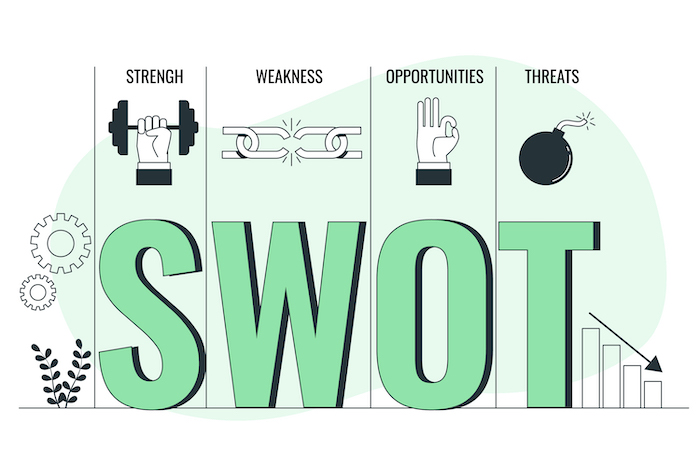Table of Contents
Introduction
In the intricate dance of commerce, a well-crafted Business Strategy Plan isn’t just a document – it’s a guiding star. Picture this: a ship embarking on a stormy sea without a navigational chart. Such is the fate of a business without a robust strategy. The significance of this compass cannot be overstated. It’s the canvas on which visionary strokes meet actionable insights, steering companies toward their North Star – success. Enter this article, a treasure trove of insights, where we unlock the art and science of building a formidable Business Strategy Plan that transforms ideas into triumphs.
Brief Overview of the Article Content
Within the confines of this digital parchment lies a blueprint for conquering the modern business arena through an astute Business Strategy Plan. Venture with us through the lush landscapes of market analysis, where industry trends reveal secret pathways. Witness the birth of objectives that are not mere goals but beacons of accomplishment. Glide through the SWOT analysis terrain, where strengths become your sword and threats your shield. Traverse the realm of core strategies, where innovation and differentiation forge the weapons of competitiveness. Fear not, for we will unveil the map to effective implementation, risk management, and the metrics that whisper tales of progress. Let’s embark on this odyssey, turning concepts into chronicles of success.

Executive Summary
Unveiling the Essence of the Business Strategy Plan
Embarking on the journey of strategic excellence, a well-crafted Business Strategy Plan stands as the cornerstone of organizational triumph. This executive summary peels back the curtain on the intricate layers of this strategic masterpiece, providing a panoramic view of its vital elements and driving principles.
Navigating the Landscape of Success
At its core, the Business Strategy Plan acts as a navigational chart guiding businesses through the uncharted waters of the market. In the cacophony of choices, it serves as the compass that aligns every action, resource, and aspiration. As the bedrock of decision-making, a well-defined strategy breathes life into objectives and directs the pursuit of opportunities, ensuring the voyage towards success is purposeful and robust.
Objectives: Illuminating the Path Forward
Contained within this plan are the North Stars of the business realm – objectives. These are not mere goals; they are beacons of ambition that illuminate the path to progress. Objectives tether every effort to a grander purpose, providing a unified direction to the team. They propel the company forward, infusing intention into each endeavor and crystallizing the vision into tangible achievements.
Key Strategies: The Art of Tactical Brilliance
At the heart of the plan lie the key strategies – the tactical brilliance that transforms vision into reality. These strategies, carefully crafted and rooted in market insights, offer a systematic approach to addressing challenges and seizing opportunities. Whether it’s market expansion, product innovation, or operational efficiency, these strategies carve out the roadmaps that lead to success.
Business Strategy Plan Breakdown
1. Market Analysis

Decoding the Market Landscape
A pivotal pillar of the Business Strategy Plan, market analysis stands as the compass guiding businesses toward the shores of success. This section unfurls the intricate tapestry of market dynamics, providing insights that shape every strategic move.
Navigating Industry Waves and Trends
Embarking on the journey of strategy necessitates a deep dive into the industry currents. An astute business strategy plan hinges upon understanding industry shifts and trends that sway market behavior. By decoding these ripples, businesses can position themselves at the crest of innovation, surging ahead in sync with the industry’s evolution.
Identifying the Bull’s Eye: Target Market
Within the market’s expanse lies the treasure trove of potential customers. Target market identification and segmentation emerge as the guiding stars in this quest. Armed with a keen understanding of demographics, psychographics, and behavior patterns, businesses can craft tailored strategies that resonate with the intended audience, fostering meaningful connections and brand loyalty.
Rivals and Allies: Competitor Analysis
In the theater of business, every move has a counter move. This is where competitor analysis wields its significance. By dissecting competitors’ strengths, weaknesses, strategies, and market positioning, a Business Strategy Plan refines its approach. This insights-driven evaluation allows businesses to strategically position themselves, differentiating from rivals and capitalizing on untapped opportunities.
2. Vision and Mission

Illuminating the Path Ahead
Central to the heart of any impactful Business Strategy Plan, the Vision and Mission set the stage for a company’s odyssey. Like stars guiding sailors, these elements provide direction, purpose, and a North Star to navigate towards.
The North Star: Defining the Long-Term Vision
The visionary seed of a Business Strategy Plan is its long-term vision. It gives us a depiction of where the company aspires to stand amidst the stars of its industry in the future. This guiding light fuels innovation ignites passion, and unites efforts toward a common horizon. A meticulously crafted long-term vision shapes decisions, resonates with stakeholders, and acts as a magnetic force propelling the business forward.
Mission Possible: Crafting an Inspiring Mission Statement
A mission statement isn’t just words on paper; it’s the heartbeat of the organization. A potent Business Strategy Plan takes great care in crafting a mission statement that succinctly encapsulates the company’s purpose, values, and ambitions. It’s a rallying cry that unites teams and galvanized action. An inspiring mission statement isn’t just an articulation; it’s an affirmation of the journey that lies ahead.
3. Goals and Objectives

Crafting the Blueprint for Success
In the architectural marvel of a Business Strategy Plan, the Goals and Objectives section stands as the blueprint that translates vision into reality. These are not just dreams; they are specific, measurable, achievable, relevant, and time-bound milestones that illuminate the path to success.
Precision in Action: SMART Goals
A Business Strategy Plan thrives on SMART goals. Specificity provides clarity, measurability gauges progress, attainability ensures feasibility, relevance aligns goals with the overarching vision, and time-bound nature infuses urgency. By setting these SMART goals, businesses chart a course that’s both intentional and attainable, turning aspirations into actionable steps.
The Nexus of Strategy: Linking Objectives
In this intricate tapestry of strategy, each objective is a thread woven into the grand design. A strategic Business Strategy Plan masterfully weaves these objectives, aligning them with the overarching strategy. Every goal becomes a stepping stone, carving out the path that leads to the desired future.
4. SWOT Analysis

Unveiling the Landscape Within
A Business Strategy Plan delves into uncharted terrain through the SWOT Analysis. This exploration uncovers the Strengths, Weaknesses, Opportunities, and Threats – the pillars on which strategies stand.
Fortification through Strengths
Strengths aren’t just assets; they’re the foundations upon which success is built. A robust Business Strategy Plan capitalizes on these strengths, leveraging them to gain a competitive edge. By identifying and enhancing these inherent advantages, businesses forge strategies that thrive.
Overcoming Weaknesses, Confronting Threats
No business sails without challenges. A Business Strategy Plan acknowledges weaknesses and confronts threats head-on. Mitigating weaknesses and strategizing against threats is the armor that ensures businesses traverse stormy waters unscathed. It’s the strategic shield that safeguards the journey to success.
5. Core Strategies

Blueprint for Triumph
Central to the Business Strategy Plan, core strategies act as the architectural blueprint for triumph. These are not mere plans; they’re the high-level roadmaps that guide businesses through the labyrinth of competition.
Investment, Growth, Differentiation
Investment, growth, and differentiation form the trinity of core strategies. Investment fuels expansion, growth sustains momentum, and differentiation carves a unique identity. A Business Strategy Plan weaves these strategies harmoniously, paving a path to not just surviving but thriving.
The Innovation Symphony
Innovation isn’t just a buzzword; it’s the heartbeat of a Business Strategy Plan. Integrating innovation and technology doesn’t just ensure relevance; it propels businesses into the forefront of evolution. By embracing cutting-edge approaches, a strategy blossoms into a dynamic force that reshapes industries.
6. Action Plan

Translating Strategy into Action
The heartbeat of a successful Business Strategy Plan lies within the Action Plan. This section breathes life into the strategic vision by meticulously detailing how each core strategy will be realized. Every high-level idea is transformed into a series of tangible steps, each contributing to the grand orchestration of success.
Navigating the Tactical Landscape
Within the Action Plan, each core strategy unfurls its wings. Detailed steps are plotted out, creating a roadmap for implementation. These steps serve as the tactical compass that guides teams through the complexity of execution, ensuring that the strategy’s aspirations are not lost in translation.
All Hands on Deck: Responsibilities and Timelines
The Action Plan is where roles are assigned and responsibilities are distributed. Each team member knows their part to play in this grand strategy. Timelines are set in stone, infusing urgency into every task. The orchestration of responsibilities and timelines ensures that the symphony of execution remains harmonious.
Resources: Fueling the Strategy Engine
A well-crafted Business Strategy Plan knows that resources are the fuel that drives the strategy engine. The Action Plan doesn’t just detail steps; it allocates the necessary resources for each stage. Whether it’s manpower, finances, or technology, this section ensures that the tools required for success are readily available.
7. Performance Metrics

Guiding Success with Metrics
Within the blueprint of a Business Strategy Plan, Performance Metrics shine as guiding stars. These are the quantifiable markers that gauge progress, illuminate successes, and uncover areas for business improvement. In this section, a map is drawn that leads the way to achievement.
Quantifying Progress: Key Performance Indicators (KPIs)
Key Performance Indicators (KPIs) are the lighthouses in the tumultuous sea of strategy. These markers, carefully chosen and meticulously tracked, provide insight into the health of the plan. They offer data-driven validation of success, acting as navigational beacons that keep the strategy on course.
Aim High: Establishing Benchmarks
Benchmarks for success are etched within this section. They serve as the signposts that mark progress toward overarching goals. These benchmarks, based on historical data and industry standards, provide a tangible measure of achievement, allowing the strategy to course-correct as needed.
Adapting the Sail: Review and Adaptation
A Business Strategy Plan recognizes that the landscape isn’t static. This section acknowledges the importance of regular review and adaptation. Metrics are not just recorded; they’re interpreted. Trends are studied, successes are celebrated, and shortcomings are addressed. This dynamic approach ensures that the strategy remains aligned with objectives, sailing smoothly in the face of change.
8. Budget and Resources

Fueling Strategy with Financial Precision
In the heart of the Business Strategy Plan, the Budget and Resources section pulses with financial life. This is where strategy and fiscal responsibility merge, ensuring that the voyage toward success is well-funded and well-equipped.
Allocating Wisely: Finances and Resources
Allocation is an art in this section. Finances are distributed strategically, making every dollar count. Resources, whether tangible assets or intangible expertise, are assigned to tasks with precision, optimizing the strategy’s potential.
Preparing for the Unexpected: Contingency Planning
A well-constructed Business Strategy Plan knows that the business seas can be unpredictable. This section features contingency planning, preparing for the unforeseen financial storms. It’s a safety net, ensuring that even in the face of unexpected expenses, the strategy remains on course.
Abundant Resources: Ensuring Availability
Resource availability is a cornerstone of execution. This section ensures that the resources required for each strategic phase are readily accessible. Whether it’s personnel with the right skill sets or the technological infrastructure, this preparation ensures that no aspect of the strategy faces resource scarcity.
9. Risk Management

Navigating the Realm of Uncertainty
In the heart of the Business Strategy Plan lies the Risk Management section. This is where the business’s battle armor is forged, preparing for the uncertainties that the journey may bring.
Identifying Risks: The First Line of Defense
Risk identification is the initial step. This section carefully scrutinizes the landscape, identifying potential pitfalls that may threaten the strategy’s success. By acknowledging these risks upfront, the Business Strategy Plan fortifies itself against future challenges.
Crafting Shields: Developing Mitigation Strategies
Mitigation strategies become the shields that protect the strategy. This section delves into crafting detailed plans that address identified risks. Each plan outlines the steps to be taken to minimize the impact of potential threats, ensuring that the strategy sails on unscathed.
Ready for Battle: Creating a Risk Response Plan
A well-prepared Business Strategy Plan stands armed with a Risk Response Plan. This section is the tactical playbook that outlines actions to be taken when risks materialize. It ensures that the strategy is not only prepared but also nimble enough to navigate the unexpected.
10. Implementation Timeline

Charting the Course of Action
Within the Business Strategy Plan, the Implementation Timeline section charts the chronological course to success. This is where dreams transform into reality through a sequence of well-defined phases and milestones.
The Art of Sequencing: Phases and Milestones
Implementation is a journey composed of steps. This section breaks down the strategy into phases and milestones, ensuring that the path is clear and manageable. It’s the strategic roadmap that teams follow, knowing where they stand and where they’re headed.
Visualizing Progress: Gantt Chart or Timeline
A visual representation adds dimension to the timeline. This section may include a Gantt chart or a timeline visualization, offering a snapshot of the strategy’s evolution. These visuals provide an at-a-glance overview, enhancing communication and fostering a sense of alignment.
11. Communication Strategy

The Weave of Communication
In the intricate tapestry of the Business Strategy Plan, the Communication Strategy section is the weave that connects internal threads to external forces. It ensures that the strategy’s message is conveyed with clarity, both within the organization and to the world outside.
Nurturing Unity: Internal Communication Approaches
Internal communication is the heartbeat of unity. This section outlines approaches that foster seamless communication among team members. It ensures that every individual understands their role in the strategy and is aligned with the collective purpose.
Bridges to the World: External Communication
Beyond the organization, the strategy’s voice needs to be heard. This section delineates approaches for external communication. It ensures that the strategy’s mission, objectives, and achievements are effectively communicated to stakeholders, partners, and the industry at large.
Transparent Channels: Ensuring Alignment
In the intricate tapestry of effective communication, two foundational pillars stand tall: alignment and transparency. Within this section, we underscore the significance of communication channels that not only facilitate transparency but also unite every individual under the same banner. By eradicating ambiguity, these channels become conduits of shared understanding, nurturing a collective sense of purpose that weaves through the heart of the organization.
12. Monitoring and Evaluation

The Pulse of Progress
At the heart of the Business Strategy Plan is the Monitoring and Evaluation section. This ongoing process measures the strategy’s pulse, gauging the health of its implementation, and ensuring its continuous alignment with the desired outcomes.
Charting Progress: Regular Tracking
The strategy’s trajectory is charted through regular progress tracking. This section establishes a framework for measuring milestones achieved, tasks completed, and goals reached. It provides a real-time snapshot of progress, allowing teams to celebrate wins and address any deviations.
Measuring Impact: Evaluating Strategy Effectiveness
In this segment, we venture beyond the realm of mere numbers. Here, the evaluation extends its reach to the profound impact the strategy casts upon the broader goals of the organization. Does it successfully steer objectives towards fruition? Does it act as a driving force in the realization of the long-term vision? This qualitative assessment serves as a panoramic lens, providing a comprehensive and holistic understanding of the strategy’s effectiveness.
The Art of Adaptation: Making Necessary Adjustments
A Business Strategy Plan isn’t rigid; it’s adaptable. This section acknowledges that the business landscape is dynamic. Based on the insights gathered from tracking and evaluation, adjustments are made. Strategies are refined, fine-tuned, or pivoted to ensure continued alignment with objectives.
Conclusion

Navigating the Path to Success: The Culmination of Strategy
As we near the end of this journey through the intricacies of a Business Strategy Plan, the conclusion stands as the culminating point where the essence of strategic prowess converges. A well-structured strategy plan isn’t just a roadmap; it’s the navigator that steers businesses toward the shores of success.
A Symphony of Strategy
This comprehensive exploration has unraveled the threads that compose a robust Business Strategy Plan. From envisioning the future through vision and mission to meticulous execution via action plans, this plan forms a symphony where each section plays its role to perfection. It’s a choreographed dance where objectives, analysis, metrics, and communication harmonize, painting the portrait of achievement.
Harnessing the Power of Strategy
The potential for success resides in the heart of a well-crafted Business Strategy Plan. This culmination of strategies, insights, and actions encapsulates the collective wisdom of the organization. By aligning vision with execution, businesses harness the power of strategy to transform aspiration into reality.




This Post Has 4 Comments